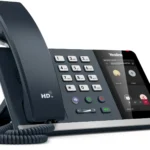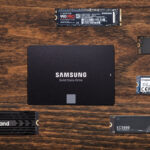5 Best Outdoor / Camping Power Banks in Kenya: Your Complete 2025 Buying Guide

Let me be straight with you: your weekend camping trip can turn into a disaster with one dead phone battery. No GPS navigation back to camp. No emergency calls. No photos of that perfect sunrise over the Great Rift Valley.
Here’s the reality most outdoor enthusiasts in Kenya face: You’re either carrying the right power solution, or you’re gambling with your safety and convenience. Whether you’re hiking Mount Kenya, camping at Hell’s Gate, or spending a weekend at Lake Naivasha, reliable portable power isn’t a luxury—it’s essential survival gear.
The good news? You don’t need a Ksh 100,000+ generator to stay powered off-grid. The right camping power bank can keep your essential devices running for days while fitting comfortably in your backpack.
The Problem:
- Standard smartphone chargers die after 1-2 charges
- Traditional power banks can’t handle outdoor conditions
- You need power for phones, GPS devices, cameras, headlamps, and more
- Kenyan outdoor conditions (dust, heat, moisture) destroy cheap electronics
What You’ll Learn: By the end of this guide, you’ll know exactly which camping power bank matches your outdoor adventures, how to avoid expensive mistakes, and where to buy authentic units in Kenya at fair prices.
Get The Difference Between Camping Power Banks vs Regular Power Banks
Before we look at the specific recommendations, you need to understand what makes a camping power bank different from the Ksh 1,500 unit you bought on Luthuli Avenue.
Regular Power Banks: Quick Phone Top-Ups
Standard power banks typically store between 1,000 to 50,000 mAh and are designed primarily for short-term, low-power applications like charging smartphones on the go. They’re lightweight, pocket-sized, and perfect for daily commutes in Nairobi—but they fail miserably in outdoor environments.
Camping Power Banks: Multi-Day Off-Grid Power
Portable power stations store significantly more power and can handle high-wattage appliances, with output capacities handling devices up to 600W or more. These aren’t just bigger batteries—they’re complete power systems designed for extended outdoor use.
Key Differences:
| Feature | Regular Power Bank | Camping Power Bank/Station |
|---|---|---|
| Capacity | 5,000-30,000 mAh | 20,000 mAh – 3,600 Wh |
| Weight | Under 1 lb | 3-30 lbs |
| Charging Ports | 1-2 USB ports | Multiple USB, AC outlets, DC ports |
| Durability | Basic plastic | Ruggedized, weather-resistant |
| Price Range (Kenya) | Ksh 1,500-10,000 | Ksh 6,000-170,000 |
| Recharge Time | 2-4 hours | 4-10 hours (faster with solar) |
The Bottom Line: If you’re going off the grid for an extended period and need to power larger devices like camping refrigerators or power tools, a portable power station is the better option due to its higher capacity and multiple output options.
The 5 Best Camping Power Banks Available in Kenya
1. Anker PowerCore 26,800mAh – Best Budget Camping Power Bank
Price in Kenya: Ksh 7,000 – 9,000
Capacity: 26,800 mAh (approximately 96 Wh)
Who It’s For: Weekend campers, hikers, budget-conscious adventurers
Why This Works:
The Anker PowerCore 26,800mAh charges most phones over 6 times, tablets at least 2 times, and features three USB output ports with PowerIQ and VoltageBoost technology for simultaneous high-speed charging.
Real-World Performance:
- Charge an iPhone 8 seven times before needing a recharge
- Charge a Samsung Galaxy S10 five times
- Charge iPad mini 4 twice
- Dual Micro USB input offers recharge speeds up to twice as fast as standard power banks, with a full recharge taking just over 6 hours
Perfect For:
- 2-3 day camping trips at Aberdare National Park
- Hiking expeditions where weight matters
- Families needing to charge multiple smartphones
- Emergency backup power at home during power outages
What You Get:
- PowerCore 26,800mAh power bank
- 2 Micro USB cables
- Travel pouch
- 18-month warranty
Where to Buy in Kenya: Available at Digital Store Kenya, Avechi, and authorized Anker dealers across Nairobi. Delivery within 24-48 hours to most major towns.
2. EcoFlow RIVER 2 Portable Power Station – Best Mid-Range Option
Price in Kenya: Ksh 33,000
Capacity: 256 Wh (71,111 mAh equivalent)
Who It’s For: Serious campers, weekend warriors, small families
Why This Matters:
The EcoFlow RIVER 2 is a compact 256Wh power station with fast charging and multiple ports, ideal for travel, home, or outdoor use. This is where you move from “basic phone charging” to “actual camping power system.”
Real-World Applications:
- Power a portable fridge for food storage overnight
- Run LED camping lights for 20+ hours
- Charge laptops, drones, and cameras
- The EcoFlow River 3 can recharge a dead MacBook Pro three times before needing a recharge while powering a separate monitor simultaneously
Key Features:
- Multiple output options: USB-A, USB-C, AC outlet
- Fast recharging: Full charge in 4 hours
- Lightweight design perfect for backpacking
- Built-in LED emergency light
Perfect For:
- 3-5 day camping trips at Maasai Mara
- Beach camping at Diani or Watamu
- Emergency home backup during Kenya Power outages
- Content creators needing to power cameras and drones
“Is Ksh 33,000 too expensive for a power bank?”
Not if you break it down: You’re paying roughly Ksh 11,000 per year over a 3-year lifespan. That’s less than Ksh 1,000 per month for unlimited off-grid power. Compare that to replacing cheap Ksh 3,000 power banks every 6 months—you’ll actually save money while getting 10x the performance.
3. Anker 737 Power Bank (24K) – Best High-Performance Portable Charger
Price in Kenya: Ksh 12,000 – 15,000
Capacity: 24,000 mAh (approximately 86 Wh)
Who It’s For: Tech professionals, digital nomads, power users
The Game-Changer:
The Anker 737 Power Bank features 140W two-way fast charging and provides detailed information on each port down to the tenth of a watt, with lifetime battery health tracking showing total watt hours inputted and outputted.
Why Tech Lovers Choose This:
- 140W total output—charge laptops at full speed
- Charge 3 devices simultaneously without slowdown
- Best-in-class digital display shows exact power usage
- Premium build quality that survives outdoor conditions
Real Use Cases:
- Remote workers camping while working (yes, it’s a thing)
- Photographers on multi-day safari shoots
- Drone operators at Amboseli National Park
- Anyone needing laptop-level power off-grid
The Display Advantage: Unlike basic power banks with vague LED indicators, the Anker 737 provides detailed information on each port including precise power usage, making it easy to track exactly how much charge remains.
4. EcoFlow RIVER 2 Pro – Best Premium Camping Power Station
Price in Kenya: Ksh 65,000
Capacity: 768 Wh (213,333 mAh equivalent)
Who It’s For: Serious outdoor enthusiasts, extended camping trips, small groups
When You Need Serious Power:
The EcoFlow RIVER 2 Pro is a high-capacity 768Wh power station with ultra-fast charging, ideal for backup, outdoor, and mobile power.
Real-World Capacity:
- Charge smartphones 40+ times
- Run a portable refrigerator for 10+ hours
- Power a 50″ TV for 5 hours
- Charge laptop 12+ times
Premium Features:
- 800W AC output (handles most small appliances)
- Ultra-fast charging: 0-100% in 70 minutes
- Multiple charging methods: AC, car, solar panels
- Smart app control via Bluetooth
- Built-in emergency light system
Perfect For:
- Week-long camping expeditions to Tsavo
- Large families or groups camping together
- Professional guides and tour operators
- Emergency home backup during extended outages
Investment Breakdown:
Yes, Ksh 65,000 seems expensive. But consider this: The Goal Zero Sherpa 100PD charged an iPhone 13 from dead to 100% seven times, and models with similar capacity to the RIVER 2 Pro can handle extended camping needs. You’re buying power independence for years, not months.
5. Goal Zero Flip 24 – Best Ultra-Portable Day Trip Power Bank
Price in Kenya: Ksh 4,500 – 6,000 (available through specialized outdoor retailers)
Capacity: 20,000 mAh (74 Wh)
Who It’s For: Day hikers, minimalists, ultralight enthusiasts
The Minimalist Choice:
Compact and lightweight, the Goal Zero Flip 24 reliably provides two recharges on most smartphones as well as most GPS devices, headlamps, and fitness trackers.
Why Ultra-Light Matters: When you’re hiking Mount Longonot or tracking wildlife in Samburu, every gram counts. This power bank disappears into your daypack while keeping essential devices alive.
Ideal Applications:
- Day hikes where you only need phone/GPS backup
- Trail runners using fitness trackers
- Emergency backup in your car’s glove compartment
- Festival camping where you need minimal gear
The Honest Truth: This won’t power your laptop or run a fridge. But for pure hiking and day adventures? It’s perfect. The Goal Zero Flip 24 charges to full in four hours via USB-C cable and is FAA carry-on compliant, making it an ideal travel companion.
Read also: 5 Best Power Banks for iPhone in Kenya
How to Choose the Right Camping Power Bank for Your Needs
Step 1: Calculate Your Power Requirements
Basic Formula:
- List all devices you’ll charge (phone, camera, GPS, headlamp)
- Check each device’s battery capacity (usually in mAh)
- Add them up and multiply by 1.5 for efficiency loss
- That’s your minimum power bank capacity needed
Example:
- iPhone 14: 3,279 mAh
- Samsung Galaxy S23: 3,900 mAh
- Garmin GPS: 2,000 mAh
- Camera battery: 1,500 mAh
- Total: 10,679 mAh × 1.5 = 16,000 mAh minimum
Step 2: Match to Your Trip Duration
1-2 Days: 10,000-20,000 mAh power bank (Ksh 4,000-8,000)
3-5 Days: 20,000-30,000 mAh power bank or 250Wh station (Ksh 8,000-35,000)
Week+: 500Wh+ power station (Ksh 50,000+)
Step 3: Consider Additional Devices
Need to power more than phones? Here’s what different capacities can do:
20,000 mAh Power Bank:
- Smartphones: 4-6 full charges
- Tablets: 1-2 charges
- Bluetooth speakers: 3-5 charges
- Headlamps: 15+ charges
256 Wh Power Station (like RIVER 2):
- Everything above, PLUS:
- Laptop: 3-4 charges
- Portable fan: 12+ hours
- LED lantern: 30+ hours
- Small drone: 4-6 battery charges
768 Wh Power Station (like RIVER 2 Pro):
- Everything above, PLUS:
- Mini fridge: 10+ hours
- Electric kettle: 5-7 uses
- CPAP machine: Multiple nights
- Power tools: Several hours of use
Budget Tier Breakdown: What You Can Afford
Entry Level (Ksh 2,000 – 8,000)
Best Options:
- Anker PowerCore 10,000mAh: Ksh 5,500
- Anker PowerCore Select 20,000mAh: Ksh 7,000
What You Get:
- Basic phone charging (3-7 full charges)
- Reliable brand warranty
- 1-2 day camping capability
What You Miss:
- No AC outlets for laptops
- No solar charging capability
- Limited durability in harsh conditions
Who This Works For:
- Students on budget camping trips
- Casual weekend campers
- Emergency phone backup only
Mid-Range (Ksh 8,000 – 40,000)
Best Options:
- Anker 737 PowerCore 24K: Ksh 12,000-15,000
- Anker PowerCore 26,800mAh: Ksh 7,000-9,000
- EcoFlow RIVER 2: Ksh 33,000
What You Get:
- Multiple device charging
- Some laptop charging capability
- Better build quality
- 3-5 day power capacity
The Sweet Spot: This price range offers the best balance between cost and functionality, with power banks generally being less expensive and cost-effective solutions for keeping devices charged on the go.
Who This Works For:
- Regular campers (monthly trips)
- Small families
- Photography enthusiasts
- Weekend overlanders
Premium (Ksh 40,000 – 170,000)
Best Options:
- EcoFlow RIVER 2 Pro: Ksh 65,000
- EcoFlow DELTA 2 Max: Ksh 169,000
- Goal Zero Yeti 700: Ksh 80,000-120,000 (specialized importers)
What You Get:
- Professional-grade power systems
- Run actual appliances (fridges, tools)
- Solar panel compatibility
- Week+ off-grid capability
- Premium warranties and support
Investment Reality: The EcoFlow DELTA Pro features a massive 3.6kWh capacity expandable up to 25kWh and is the most robust solution for camping, road trips, or home backup during power outages. This is buying power infrastructure, not just a charging accessory.
Who This Works For:
- Professional safari guides
- Extended overland expeditions
- Off-grid property owners
- Emergency preparedness focused families
Answering Your Top Questions About Camping Power Banks
“Can I Use Solar Panels to Recharge These Power Banks?”
Short Answer: Depends on the model.
The Details:
- Basic power banks (Anker 10K-26K): No built-in solar compatibility
- Mid-range stations (EcoFlow RIVER 2): Yes, with optional solar panels
- Premium stations: Built-in solar charging controllers
The Goal Zero Yeti 200X can be charged three ways: plugging into a wall at home, from your car via 12V charging cable, or by solar panels sold separately.
Solar Panel Costs in Kenya:
- 50W panel: Ksh 8,000-12,000
- 100W panel: Ksh 15,000-25,000
- 200W panel: Ksh 30,000-45,000
Reality Check: Solar charging is SLOW. Expect 6-12 hours of good sunlight to fully charge a 256Wh station with a 100W panel. It’s backup power, not fast charging.
“How Long Do These Power Banks Actually Last?”
Battery Lifespan:
- Quality lithium-ion batteries: 500-1,000 charge cycles
- That’s 2-4 years of regular use
- Premium models (EcoFlow, Goal Zero): Up to 10 years
Maintenance Matters:
- Store at 50-60% charge when not in use
- Avoid extreme temperatures (Kenya heat is a killer)
- Charge/discharge fully every 3 months
- Keep firmware updated on smart models
Warranty Coverage in Kenya: Most authorized dealers offer:
- Anker: 18-month warranty
- EcoFlow: 2-year warranty (through authorized retailers)
- Extended warranties available: Add 20-30% to purchase price
“What About Fake Power Banks? How Do I Avoid Them?”
The Kenya Market Reality: Up to 60% of “branded” power banks sold in downtown Nairobi are counterfeit. Here’s how to protect yourself:
Buy from Authorized Dealers Only:
- Nairobi: Avechi, Digital Store Kenya, GrandHub Technologies, Phoneplace
- Mombasa: Authorized electronics retailers on Moi Avenue
- Online: Jumia (verify seller ratings), official brand websites
Red Flags for Fake Units:
- Price too good to be true (Anker 26K for Ksh 3,000? Fake.)
- No serial number or verification code
- Packaging looks cheap or has spelling errors
- Seller can’t provide warranty card
- Weight feels wrong (fakes use cheaper, lighter batteries)
Verification Steps:
- Check Anker serial numbers at official website
- Scan QR codes on packaging
- Test charging speed with known devices
- Weigh the unit (specs should match official weight)
Investment Protection: Spend Ksh 7,000 on a genuine Anker rather than Ksh 3,000 on a fake that dies in 3 months. The math is simple.
Read also: How to Spot Fake Power Banks in Kenya: The Complete Truth Nobody Talks About
“Can These Handle Kenya’s Heat and Dust?”
Temperature Tolerances:
- Most lithium batteries: 0°C to 40°C operating range
- Kenya daytime temps: Often 30-38°C (within range)
- DANGER ZONE: Inside a closed car (60°C+)
Heat Management Tips:
- Never leave power banks in direct sunlight
- Store in shade or cooler during day camping
- Use insulated bags for transport
- Allow cooling before charging after hot exposure
Dust Protection:
- Standard power banks: IP rating minimal (avoid dust storms)
- EcoFlow models: Better sealed ports
- DIY protection: Ziplock bags, waterproof cases
The Honest Truth: Power banks underwent durability tests including being dropped exactly 2 feet onto concrete to simulate typical fumbles, and units that didn’t pass this standardized test didn’t make the recommended list. Quality units survive real-world conditions—cheap ones don’t.
Portable Power Banks vs Power Stations: Making the Right Choice
Choose a Portable Power Bank (10K-30K mAh) When:
✅ Your main need is charging smartphones and tablets
✅ Weight and portability are critical (hiking, backpacking)
✅ Budget is under Ksh 15,000
✅ Trip duration is 1-3 days
✅ You don’t need to power laptops or appliances
Best Options:
- Anker PowerCore 26,800mAh (Ksh 7,000-9,000)
- Anker 737 PowerCore 24K (Ksh 12,000-15,000)
Choose a Portable Power Station (250Wh+) When:
✅ You need to power laptops, cameras, and multiple devices
✅ Trip duration is 4+ days
✅ You want AC outlet capability
✅ Solar charging compatibility matters
✅ You’re okay with 5-15 lb weight (car camping, base camp)
Best Options:
- EcoFlow RIVER 2 (Ksh 33,000)
- EcoFlow RIVER 2 Pro (Ksh 65,000)
The Crossover Point:
For high-capacity, outdoor, or emergency use, portable power stations are ideal, while power banks suit daily, lightweight needs for mobile devices. The choice is based on capacity, size, and adaptability to your environment.
Quick Decision Matrix:
| Your Situation | Recommended Solution | Price Range |
|---|---|---|
| Day hiking | Goal Zero Flip 24 | Ksh 4,500-6,000 |
| Weekend camping (1-2 people) | Anker 26,800mAh | Ksh 7,000-9,000 |
| Multi-day camping (2-4 people) | EcoFlow RIVER 2 | Ksh 33,000 |
| Week-long expedition | EcoFlow RIVER 2 Pro | Ksh 65,000 |
| Overlanding / RV camping | EcoFlow DELTA 2 Max | Ksh 169,000 |
Where to Buy Authentic Camping Power Banks in Kenya
Trusted Online Retailers
1. Avechi Kenya (avechi.co.ke)
- Wide Anker selection
- Nairobi-based with fast delivery
- Competitive pricing
- Phone: Check website for current contact
2. TechStore Kenya (techstore.co.ke)
- Authorized Anker dealer
- Physical store in Nairobi
- Ships across East Africa
- Phone: +254 111 043 000
3. Jumia Kenya (jumia.co.ke)
- Verify seller ratings (4.5+ stars)
- Check “Jumia Verified” badge
- Read recent reviews
- Buyer protection available
4. GrandHub Technologies (grandhub.co.ke)
- Anker official products
- Delivery across Kenya, Uganda, Tanzania
- Warranty support
- 1-2 hours delivery in Nairobi
Physical Stores in Nairobi
Sarit Centre Area:
- Multiple authorized electronics dealers
- Can test units before buying
- Immediate pickup
Westlands:
- Tech specialty shops along Mpaka Road
- Higher-end models available
CBD (Be Cautious):
- Higher risk of counterfeits
- Demand warranties and serial verification
- Shop only at established stores
Delivery Times
- Nairobi: 1-2 hours (rush delivery available)
- Major towns (Mombasa, Kisumu, Nakuru): 24-48 hours
- Remote areas: 3-5 days
- Cross-border (Uganda, Tanzania): 5-7 days
Payment Options
- M-PESA (most common)
- Bank transfer
- Card payment (Visa/Mastercard)
- Cash on delivery (selected retailers)
Your Next Steps: Making the Purchase Decision
If You’re Still Unsure, Ask Yourself:
1. What’s the worst that could happen if my devices die?
- Just inconvenience? → Budget power bank (Ksh 5,000-8,000)
- Safety risk (no GPS/emergency calls)? → Mid-range station (Ksh 30,000+)
- Professional/income loss? → Premium station (Ksh 60,000+)
2. How often will I actually use this?
- Once or twice a year? → Rent from tour operators or buy budget
- Monthly adventures? → Invest in quality (breaks down to Ksh 1,000/month over 3 years)
- Professional guide/content creator? → Premium is business expense
3. What’s my realistic budget? Don’t stretch finances for camping gear. Better to:
- Start with Anker 26,800mAh (Ksh 7,000-9,000)
- Upgrade later when you’re sure you need more
- Sell or give away the smaller unit (they hold resale value)
The “Buy Now” Checklist
Before clicking purchase:
✅ Verified the seller is authorized
✅ Checked warranty terms (18+ months minimum)
✅ Calculated power needs vs capacity
✅ Considered weight vs trip type
✅ Budgeted for accessories (cables, solar panels, cases)
✅ Read recent Kenya-based customer reviews
✅ Confirmed delivery timeline matches trip dates
After Purchase: Maximize Your Investment
First-Time Setup:
- Charge to 100% before first use
- Test all ports with your actual devices
- Register warranty with manufacturer
- Download any companion apps (EcoFlow, etc.)
Ongoing Care:
- Charge every 3 months if stored
- Keep in cool, dry place
- Avoid complete discharge (charge at 20%)
- Update firmware for smart models
Frequently Asked Questions (People Also Ask)
Q: What is the best power bank for camping in Kenya?
The EcoFlow RIVER 2 (Ksh 33,000) offers the best balance of capacity, features, and price for most Kenya campers. With 256Wh capacity and multiple ports including AC outlets, it’s ideal for travel, home, or outdoor use. For budget-conscious buyers, the Anker PowerCore 26,800mAh at Ksh 7,000-9,000 provides excellent value.
Q: How many mAh do I need for camping?
Calculate: (Total device battery capacity × number of charges needed × 1.5 for efficiency). Minimum recommendations:
- 1-2 days: 20,000 mAh
- 3-5 days: 30,000+ mAh or 250Wh station
- Week+: 500Wh+ power station
Q: Can power banks charge in the sun?
Standard power banks cannot charge via solar. You need a power station with solar input capability (like EcoFlow RIVER 2 series) plus separate solar panels. The Goal Zero Yeti 200X can be charged via wall outlet, car 12V cable, or solar panels sold separately.
Q: Are Anker power banks available in Kenya?
Yes, Anker is widely available through authorized dealers including Avechi, Digital Store Kenya, GrandHub Technologies, and Jumia. Prices range from Ksh 5,500 (10,000mAh) to Ksh 15,000 (premium models). Always verify seller authorization to avoid counterfeits.
Q: How long does a 20,000mAh power bank last camping?
For smartphone charging: 4-6 full charges depending on phone battery size. In real-world camping: 2-3 days for one person using phone moderately, charging GPS occasionally, and powering headlamp. Add extra capacity if using cameras or tablets.
Q: What’s better: power bank or portable power station for camping?
Choose portable power stations for high-capacity outdoor or emergency use, while power banks suit daily lightweight needs for mobile devices, based on capacity, size, and environmental adaptability. If you need AC outlets, go with a station. If weight matters most, choose a power bank.
Q: Where can I buy EcoFlow power stations in Kenya?
EcoFlow portable power stations are available through Price Point Kenya and select authorized electronics retailers. The RIVER 2 starts at Ksh 33,000, RIVER 2 Pro at Ksh 65,000. Verify warranty coverage before purchase.
Q: How do I know if my power bank is genuine?
Check: serial number verification (Anker website), proper weight matching official specs, high-quality packaging with no spelling errors, warranty card included, purchase from authorized dealer only. Test charging speed—fakes charge much slower than advertised.
Take Action: Get the Right Power Solution for Your Next Adventure
You’ve got the knowledge. Now here’s what you do:
Option 1: Start Smart (Budget-Friendly)
Buy: Anker PowerCore 26,800mAh (Ksh 7,000-9,000)
Where: Browse power charging solutions at Minify Kenya
Why: Proven reliability, covers 90% of camping power needs, affordable entry point
Option 2: Go Pro (Best Value)
Buy: EcoFlow RIVER 2 (Ksh 33,000)
Where: Authorized retailers in Nairobi or online
Why: AC outlets, solar capable, 3-5 day capacity, professional-grade durability
Option 3: Maximum Power (Serious Expeditions)
Buy: EcoFlow RIVER 2 Pro (Ksh 65,000)
Where: Price Point Kenya, authorized EcoFlow dealers
Why: Week+ off-grid capability, runs appliances, future-proof investment
Ready to buy? Visit Minify Kenya’s power charging solutions collection to explore your options and secure reliable outdoor power today.
Resources and Additional Reading
Buying Guides:
- Best Power Banks 2025 – GearJunkie – Professional testing and reviews
- Power Banks for Camping – Atlas & Boots – Outdoor-specific recommendations
- Portable Power Stations 2025 – TechRadar – Comprehensive station reviews
Technical Information:
- Power Bank vs Portable Power Station – EcoFlow – Understanding the differences
- Camping Power Solutions – Anker SOLIX – Technical specifications explained
Kenya-Specific Retailers:
Final Word:
Don’t let dead batteries cut your adventure short. The right camping power bank isn’t an expense—it’s trip insurance. Whether you invest Ksh 7,000 or Ksh 65,000, you’re buying peace of mind, safety, and the freedom to explore Kenya’s incredible wilderness without compromise.
Have questions about which power bank fits your specific camping style? Drop a comment below or contact authorized dealers for personalized recommendations.
Last Updated: November 2025
Prices accurate as of publication date and may vary by retailer
Read also:


 IP Phones & PBX
IP Phones & PBX
 Solid State Drive
Solid State Drive